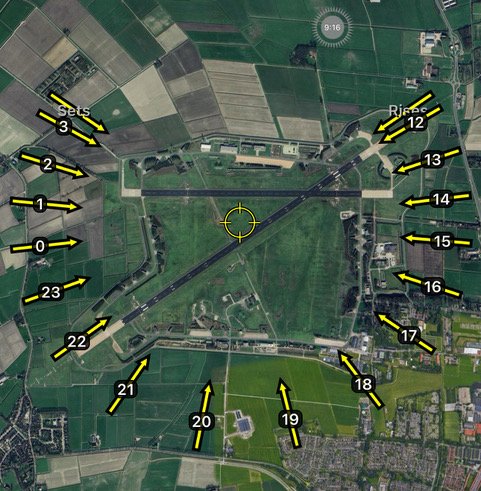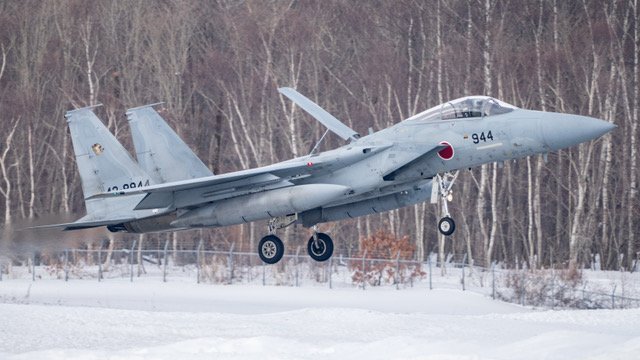Plane Spotting? Here are Some Helpful Tips
Here are some simple tips which are useful when you want to visit an unknown location to spot:
1) Google the location
It’s highly likely you don’t have to reinvent the wheel and that someone has done most of the legwork for you already. There are plenty of websites which have spotting locations including clear maps. However, these don’t always show all the possible spots, which gets me to point 2.
2) Check Google Maps
A fantastic tool to get a feel for nearby roads and potential spots. I always check the general wind direction so I know roughly which runway they would use. I then save these spots in Google Maps in order to navigate there when I visit. Gets me there quickly and without having to look at my phone while driving. And a pro tip: if you don’t want to use too much roaming data, download the map on your device before you head out. You can delete it after you’re done with it. Really makes a difference.
3) Fine tuning your spots
Small jets and fighters use less than half the runway usually so keep that in mind when you plan spots. Standing too close to the runway or at the end of it is potentially a disappointing experience.
I use an app called Sun Seeker on which you can see the angle of the sun for any time of the day and month of the year. It’s very useful. On Flightradar24 you can get live data on wind direction and general weather condition for most airports. So you can plan spots for morning and afternoons depending on how long you plan to camp. I always try to catch take off and landing, so check how much time you need to get from A to B as some sorties (especially on older aircraft) could be as short as 45 minutes. If you rent a car overseas, always bring an international driving license!
4) Ask a local spotter
An obvious one. Some spotters are happy to help you with some tips to get started, especially about non-flying days and local regulations. Check especially on local rules as some countries are a lot more open than others!
5) Cross check
Also check local holidays! Yes you wouldn’t be the first to miss this crucial bit, I’ve done 4th of July at Misawa! Also check for possible squadron rotations, for example I went all the way to Iwakuni to try to catch the USS Ronald Reagan aircraft but they were all in Guam for exercise. So see what you can find on social media as often these are announced. Saves you a wasted trip.
6) Respect local rules
If you’re going to a new country to spot, always check if it’s ok to be near the base and if any restrictions are in place. If uncertain, stay well clear of the base itself and don’t loiter near the fence lines. Never take photos of infrastructure on base unless you’re confident it’s ok to do so. Always carry ID on you and be cooperative if you’re asked to show photos. Often they just want to see that your intentions are good and that infrastructure hasn’t been photographed. If you see local spotters, always go over and say hi and introduce yourself. Don’t block exit roads etc. and use common sense.
7) On site
Before I head out I always look for a shop to stock up on drinks and food so I don’t have to do that mid spotting. Ideally the night before as not everything is open at sunrise! In winter I bring a thermos and fill it at the hotel before I go out. A hot drink is always a pick me up moment when it’s freezing! In summer theres no harm in buying a foldable cooler bag for your drinks. Ice cubes from the gas station make for cold drinks all day! Most spots will be remote so always bring more than you need. If you don’t have a car just bring what you can comfortably carry with you. I prioritise water and the odd isotonic drink. If you have a space problem you can opt for some protein bars instead of a full lunch.
Bonus is of course a toilet that’s nearby in case nature calls, so planning properly is important. Bring an empty plastic bag for garbage. Keeps it nice and tidy and keeps annoying bugs away as well.
8) Protect yourself
I always wear a wide rimmed hat and sun screen and more often than not I wear arm sleeves and a neck cover. Baseball caps don’t cover your ears, and they will burn first, so try to get something that covers your ears. All very cheap and light to pack and keeps you from getting sunburnt. The sleeves also help against mosquitos and other unwanted pests. During winter I wear my Mechanix gloves. They’re great as they keep you sort of warm but let you operate the camera and the buttons with ease. I can even use them in summer so my hands don’t get burnt either. Plus you don’t get sweat all over your gear.
And don’t forget your sunglasses and an umbrella. Wear good footwear as wet shoes and socks make for a miserable experience! If you have extra space, it’s worthwhile bringing a spare pair of socks in case you step into a puddle. I often buy mosquito repellent locally. One last tip: apply sunscreen before you head out. It’s easier to apply this in the mirror so you don’t forget any spots and your hands won’t be oily or greasy when you handle your equipment.
9) Charge your phone
And bring a battery charger pack. If you’re waiting for extended periods it’s good to have your phone charged fully. If you’re driving always bring a USB charger for the car. Don’t forget your data roaming package!
10) Have fun!
The most important part of the hobby is to have fun. I always find I enjoy the day much better if I’m well prepared, so the night prior I set out what I want to shoot and where. Planning is everything, especially if you have limited time. I find a cold drink in the shade always a real pick me up, so having a portable cooler bag could be a handy accessory. If you feel uncomfortable, take a break, especially when dehydrated. If you feel dizzy find some shade and drink water. Always take more than you think you’d need. If you’re uncomfortable or not at ease, find another spot or call it a day. There’s no use pushing yourself to the limit, there’s always tomorrow…




